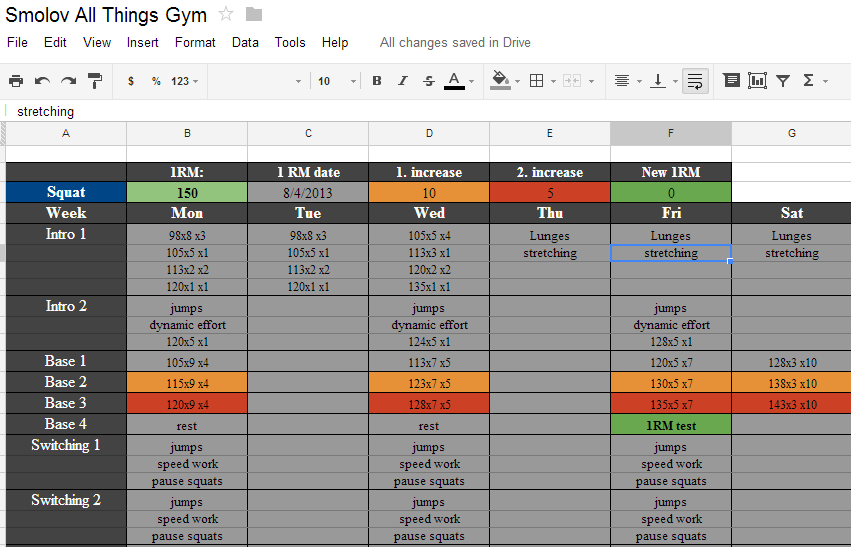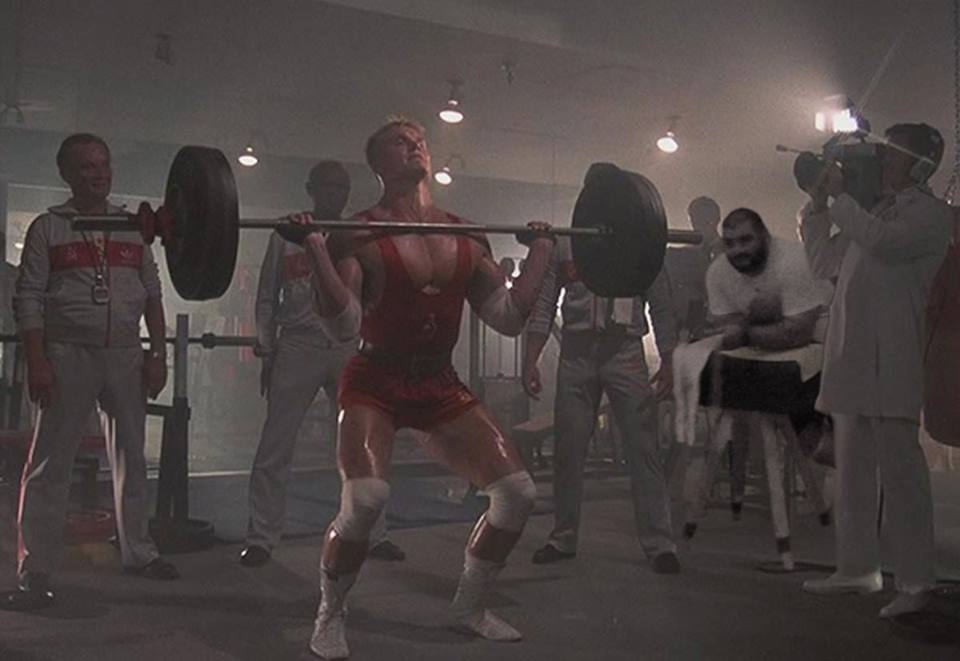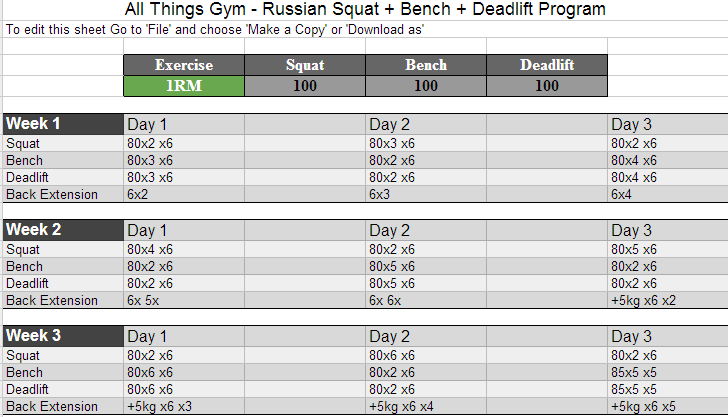Here is Part 4 of Larry’s Chinese Weightlifting Experience series.
This one is about the training methods of the provincial team, focusing on the youth and junior lifters. It covers Warm up, Groupings, Equipment, Programming, Technique and Recovery.
For specific questions for Larry please use the contact form on his blog. He might do a FAQ post answering them later on.
And if you have not yet done so, read the previous parts before this one:
Preface
The Anhui provincial training hall in Hefei city is home to about 40-60 athletes ranging from youth to senior ages all of whom live on the campus – I met lifters as young as 11 and as old as 24.
![Meng Suping, Coach Liu & Larry Meng Suping Coach Liu Larry]() Although not all the lifters training here represent the province at national meets, most are still considered among the top lifters in the province.
Although not all the lifters training here represent the province at national meets, most are still considered among the top lifters in the province.
Almost all of them are recruited from the local sports schools after a year or two of training.
The most notable lifter was Meng Suping (F75+, CHN) – the former world record holder of the Clean and Jerk with 188kg [Video] and WWC silver medalist.
Even though she oftentimes trains with the national team, she is currently with the Anhui provincial team to be closer to her family. Recently she also represented the province at the Chinese National Games and trained in Hefei city for that competition.
The provincial training centre is essentially a boarding school for athletes and their primary responsibility is to train and work their way to the national level. Education is optional, however most of the youth and junior lifters choose to attend night classes to have a high school level education.
Equipment
The facility was very large – the size of two or three full sized basketball courts at least.
![The Hefei Training Hall Hefei Training Hall]()
There were 8-12 elongated rubber platforms built into the flooring that could accommodate 3-4 barbells each. At the end of each platform was a large mirror that the lifters would face while lifting. The mirrors were covered by drapes during competition simulation days.
Each platform had several barbells, a large selection of plates, and a few squat stands. Every barbell I used was either ZKC or DHS, many of which still had an IWF decal.
I believe there were some Eleiko barbells in circulation as well. The plates were from various companies, mostly ZKC and DHS, but many from Tianjing, Eleiko, UESAKA, and some brand names that I did not recognize.
Near the entrance and away from the platforms was a large stage that was covered in gymnastics matting. This was used for stretching, walking on one another’s back, and relaxing.
On either side of the stage was accessory equipment such as a wall ladder (wall bars), a pommel horse-looking apparatus used for hyperextensions, bench press racks, power racks, inversion tables, and an electronic machine that lifters would stand on and vibrate at different frequencies.
The facility was not heated centrally, but there were many heating units placed throughout the hall. When the training hall was full, body heat was more than enough to keep everyone warm.
Warm up
The lifters slowly trickled in as it approached the scheduled time for the afternoon training session.
Everyone was still wearing their winter jackets and tennis shoes. Before I realized it, everyone had arranged themselves in a grid across the entire gym and one of the coaches began shouting out instructions for the warm-up.
The routine was very simple and similar to any GPP warm up prior to a high school PE class.
It involved ballistic/dynamic stretches of every joint from head to toe. The majority of the warm up routine can be seen in the video below:
When the general warm-up was finished, each lifter would then stretch out any problem areas they had.
Many lifters stretched out their shoulders and lats using a barbell on the squat stands and stretching the shoulders in extension. Some lifters used this time to walk on one another’s back and legs on the gymnastics mat as a form of soft tissue therapy. Some athletes did nothing and just changed into their training clothing and weightlifting shoes.
Many of the advanced lifters used creatine pre-workout.
Groups
After the lifters were completely warmed-up they separated into groups of approximately 6 to 8 lifters each.
Lifters were grouped based on their lifting caliber and all athletes within a group followed the same general programming (slight individual modifications were made based on each lifter’s specific weaknesses).
The lifters within the group split into pairs to share a barbell during the workouts.
The provincial team had several coaches, some of whom oversaw the entire training hall, and another two coaches who were assigned to be the head male coach and head female coach.
Beyond that, each group of lifters had it’s own coach, who was responsible for their programming and also coached technique during the training sessions. Although the group’s coach was responsible mainly for those 6-8 athletes, it was a very collegial atmosphere among all the athletes and coaches in the training hall.
Coach Liu was responsible for a group of 6 junior and youth male lifters, but served as a mentor for many of the advanced lifters like Meng Suping.
The lifters in his group ranged from age 13 to 16, most of whom had at least 4 years of weightlifting experience and started at age 9 or 10 in their home towns. Almost all of these lifters had been at the provincial centre for around 2 years.
Programming
The group I trained with had 9 scheduled workouts per week.
This was the minimum number of workouts for any group, with some training up to 15 workouts per week. The 9 sessions were spread out over 6 days, with Sunday being a rest day. Monday, Wednesdays, and Fridays had one workout, usually done in the afternoon. Tuesday, Thursdays, and Saturdays had two workouts, done at 9:30 and 14:30.
Although the programs were determined well in advance, the athletes in my group did not know the details of each workout until they arrived for the session. General things such as exercise selection were known, though. The programs never included a rep scheme or weight prescription, it would simply have an exercise name and the number of sets.
The athlete and coach determined weights and reps extremely subjectively. For most technical and strength lifts, reps were kept between 1-3 per set.
Technique was the first priority
It was very intuitive – the goal of each exercise was to achieve the best possible technique with the heaviest weight for the most reps. Technique was the first priority. If a rep was performed poorly during a set, the next set would likely be done at the same weight.
If a set was done well, the weight would increase in the next set. If a lifter feels very good, they may continue increasing the weight and perform heavy singles or even attempt new PR lifts.
6-8 working sets appeared to be the norm
If the exercise was performed to a heavy single, backoff sets were always done afterwards – depending on the exercise these sets would be 15-20kg lighter and usually done for two sets of doubles. A total of 6-8 working sets appeared to be the norm for squats, pulls, competition lifts, and their variations.
Squats were rarely done for heavy singles among the younger lifters, but more experienced lifters appeared to include these more frequently in their training. Rack supports were often done after a heavy back squat workout, usually for 3 sets of 3 with the same weight as the backoff sets on the back Squats.
Example: A -105M worked up to 260kg back squats for several singles, increased to 280 for another 2 singles, then backed down to 260 for doubles. He then unracked 260 from the front rack position for a few shallow dips. I do not believe 280 was a PR squat, but it appeared heavy and he had a spotter.
Not all workouts were full barbell sessions. Some workouts were used for strictly accessory work and bodybuilding, and there was even one workout that was simply a jog around the lake. The inclusion of these types of workouts was up to the discretion of the group’s coaches and the head coaches.
Exercise selection was large.
Snatches, Cleans, and Jerks were done more than once per week, as well as any variation of them i.e. power variations, hang variations, hang power variations, lifts from the blocks, power variations from the blocks, Jerk from rack, behind the neck Jerk, etc.
Bodybuilding movements were done primarily for the upper body
Other programmed exercises included heavy pulls, high pulls, fast pulls, Snatch balance, Jerk supports, rack supports, and of course front and back Squats.
Bodybuilding movements were done primarily for the upper body. Common muscle groups that were targeted include abs, obliques, upper back, lats, spinal erectors, triceps, deltoids, pecs, and forearms. Chest supported barbell rows and hyperextensions were done frequently.
For my group, the workouts were simple: 1-2 barbell movements, usually followed by 1-2 unspecified bodybuilding movements.
Some of the general “rules” they followed included the following:
- Friday workouts were almost always competition simulation days: Snatch to a max single, and Clean and Jerk to a max single.
- All other workouts during the week never had Snatch and Clean and Jerk in the same session, except for during competition preparation phases.
- AM and PM sessions in a single day were not redundant in exercise selection
- Back squats were done once per week.
- Front squats were done once per week.
- Squats and pulls were not done in the same workout.
- Clean and Jerks were never done for multiple reps together; a set of 3 Clean and Jerks was done as one Clean and 3 Jerks, lowering the bar into the rack position between each Jerk.
- Bodybuilding exercises were done for 6 sets with a rep range that caused some soreness, but not to failure (anywhere from 5-15).
My workouts at the training hall were:
- Day 1 AM: Front squats (6 sets)
- Day 1 PM: Clean and Jerks (8 sets), Clean pulls (6 sets), bodybuilding (ab crunches, side bends)
- Day 2 AM: Hang Snatch (8 sets), bodybuilding (bench supported barbell rows)
Technique
The motto “close-fast-low-balanced” is the perfect way to describe the lifting technique of the lifters in Hefei.
close fast low balanced
There is not much thought on specific things such as arm pulling, elbow direction, hips rising faster than the chest, etc. So long as the lifter kept the bar as close as possible from the floor to the receive, finished the pull as fast as possible, received the bar no higher than necessary, and stayed balanced throughout the lift, there is no reason to examine further details.
Most lifters moved their arms in a reverse-curl motion during Cleans, which was especially noticeable during power Cleans. With this technique, they were able to keep the bar extremely close to their body between finishing the pull and racking the bar.
Speed in the second pull and pull under was ubiquitous, but first pull speed varied among lifters. All lifters, however, initiated the second pull very late and many used slight arm bend to bring the bar into the hip for the 2nd pull of the Clean.
Every lifter pushed their head extremely far forward in the overhead positions of both the Snatch and Jerk. This allowed for the shoulder blades to be to be completely retracted together and shrugged upwards.
Recovery
![Larry Spinal Decompression]() There was a large emphasis placed on recovery, both physical and mental.
There was a large emphasis placed on recovery, both physical and mental.
The lifters spent time after every workout walking on one another’s backs and legs [see image above] as well as various methods of spinal decompression. The inversion tables were often used and lifters would sometimes hang upside down with their feet placed into straps on a pull-up bar.
A vibration plate was used by some athletes to help loosen up after a workout. This machine had various settings and the lifter would either stand on it, sit on it, or place their hands on it to focus on different areas of their bodies.
The athletes felt it was necessary to keep the body loose when they were not training. I was told:
If you leave the gym feeling tight, you’ll be tight the next time you walk into the gym.
Massage therapy and physical therapy were not commonly used and usually reserved for the lifters on the competitive provincial team or injured athletes.
Mental recovery was much more difficult to directly address. It is the athlete’s responsibility to try and keep other life stressors from affecting their training, but of course this may sometimes be inevitable.
The programming is also modified based on the amount of mental fatigue a group of lifters may be experiencing by replacing mentally taxing, technical workouts with more casual bodybuilding or jogging.
Other Points
- The lifters had a tremendous amount of focus when training on the platforms. Even the young lifters did not talk among one another very much between sets. But once they were finished their technical exercises, their attitude became very care free and casual.
- Around 50% of male lifters preferred squat or power Jerks over split Jerks, but every female lifter I saw performed exclusively split Jerks.
- It was very rare for a lifter to miss a Clean, and even poorly received Cleans appeared light on the recovery
- It was common for female lifters to wear a belt during Snatches.
- Straps were used on pulls and Snatches from the hang, but never on Snatches from the floor.
- Knee wraps were bandage style, either with some elasticity or just cotton cloth.
- There was always a spotter for heavy squats.
Here is a video of Larry’s workout there. Meng Suping in the green shirt.
![Larry Training in China Larry Training in China]() About the Author:
About the Author:
Larry is a 24 year old, 4th year med school student. He started weightlifting approximately 2 years ago and plans to compete in the 2014 Canadian nationals as a -85kg.
In December 2013 he traveled to China where he got to experience first hand what it’s like to train with and learn from some of the best.
You can follow Larry on Instagram @yangl123, on his blog – YangTechnique, check out his training log and see his lifts on his YouTube channel.
Larry’s Chinese Weightlifting Experience Part 4 – Training Methods is a post by Gregor from All Things Gym.
![:)]()





























 Although not all the lifters training here represent the province at national meets, most are still considered among the top lifters in the province.
Although not all the lifters training here represent the province at national meets, most are still considered among the top lifters in the province. There was a large emphasis placed on recovery, both physical and mental.
There was a large emphasis placed on recovery, both physical and mental.